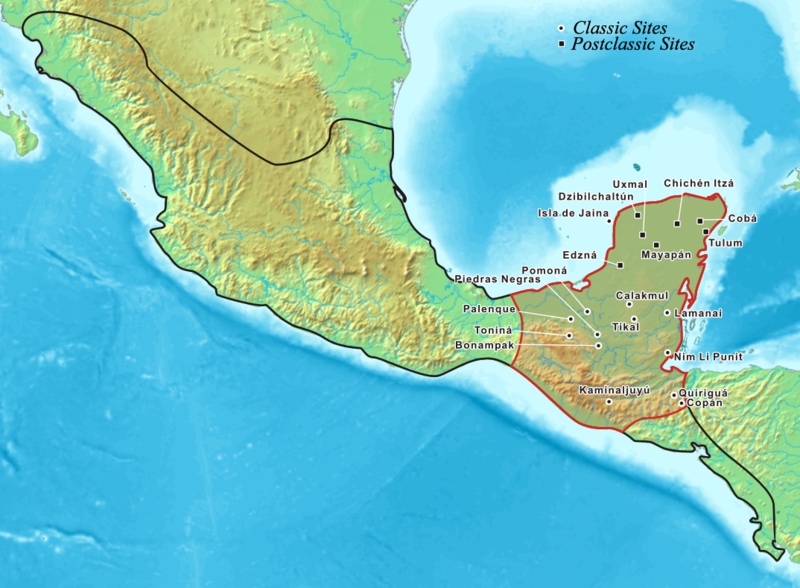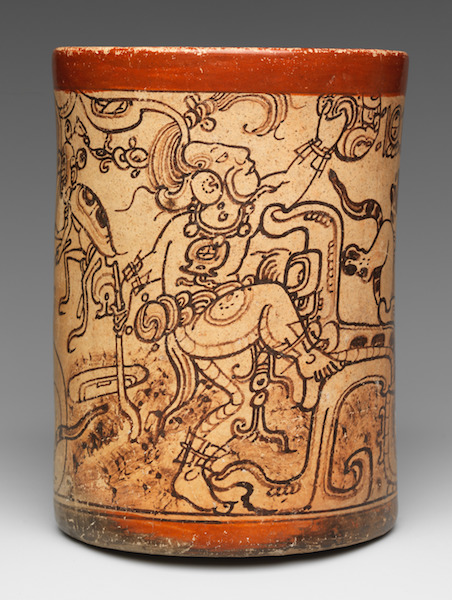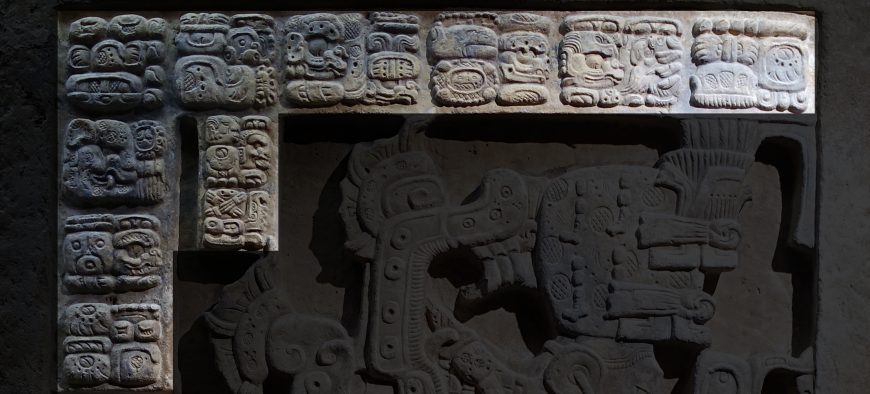The Maya, accomplished astronomers and mathematicians, developed one of the most accurate calendar systems in human history.

Map showing the extent of the Maya civilization (red), compared to all other Mesoamerica cultures (black). Today, these sites are located in the countries of Mexico, Belize, Honduras and Guatemala (image: CC BY-SA 3.0)

Vessel, Mythological Scene, 7th-8th century, Guatemala, Mesoamerica, Maya, ceramic, 14 x 11.4 cm (The Metropolitan Museum of Art)
The Maya are a culturally affiliated people that continue to speak their native languages and still often use the ancient 260-day ritual calendar for religious practices. The ancient Maya were united by belief systems, cultural practices that included a distinct architectural style, and a writing system. They were also joined by political interaction in the form of warfare and intermarriage. They left an artistic legacy that ranges from intricately carved monolithic sculptures to complex mural cycles. The ancient Maya are credited with creating the most advanced Mesoamerican writing system, which was logo-syllabic, meaning that it consists of pictorial symbols or glyphs that represent either entire words or syllables. It is the only pre-Hispanic writing system of Mesoamerica that has been largely deciphered (see image below).
The Maya are also known for their advanced understanding of time, which they acquired through their study of astronomy and which allowed for the development of a complex calendrical system.
Public inscriptions—which decorated temples and palaces—have also contributed to our knowledge of the Maya, providing archeologists with important dates, names, and ritual information.
Periods in Maya history
Historians divide Maya history into three periods:
Pre-Classic: 1000 B.C.E.-250 C.E.
Classic: 250-900 C.E.
Post-Classic: 900-1521 C.E.
The Classic Period is divided into Early Classic: 250-550 C.E. and Late Classic: 600-900 C.E. During the early Classic Period, the Maya had built only a few cities in Mesoamerica. By the Late Classic Period however, the population had grown and Maya cities had been founded throughout the region. Important Maya cities include Tikal in the east (in what is today Guatemala), Palenque in the west (what is today Mexico), and Copán in the south (in what is today Honduras).

Glyphs from Lintel 25, c. 725, Structure 23, Yaxchilán, Classic Maya, limestone, 121 x 85.5 x 13.5 cm (The British Museum)
City States, ruled independently
With a population ranging in the millions and scattered throughout a vast region, the Maya were organized into small independent kingdoms or, more accurately, into city states. Each city state was ruled by a divine lord or ajaw/ahau who controlled territory around the capital city and frequently fought with neighboring states for preeminence. Political and economic rivalries among the Maya lords were fueled by an interest in acquiring territory and controlling trade routes—activities made more complicated by the remoteness of many Maya cities as well as their diverse geographies (Maya cities could be found in lowland rainforests and mountainous highlands). Different from the later Aztec, who centralized power and created a true empire, Maya power remained de-centralized and was spread throughout numerous kingdoms.
The collapse of Maya cities in the tenth century is not fully understood but may have resulted from complex factors including climate change (and resulting drought and crop failures), overpopulation, and political unrest. Following this collapse, Maya civilization continued on the northern tip of the Yucatán Peninsula, where Chichen Itza emerged as an important city of the Post-Classic Period. Though the city was abandoned by the thirteenth century, it was the arrival of Hernan Cortés and his Spanish fleet in the early 16th century that marked the end of the Maya civilization.
Tikal National Park (Tikal Guatemala)
Additional resources:
The British Museum and Google Cultural Institute resources on Maya Culture

